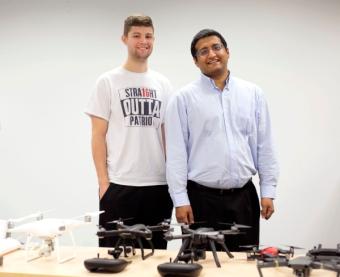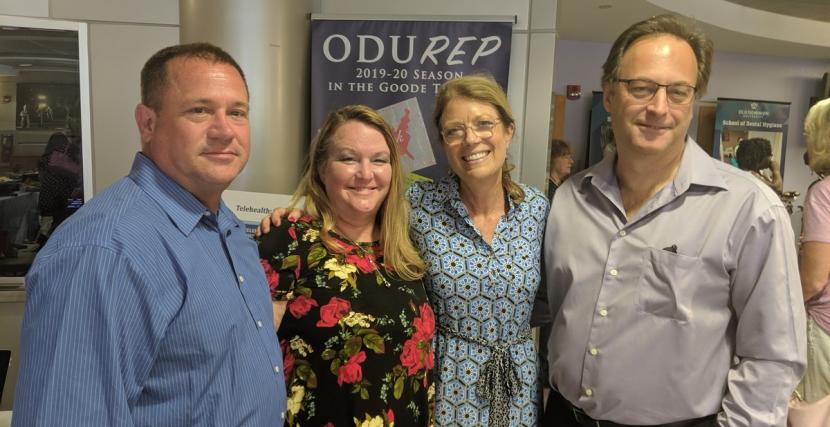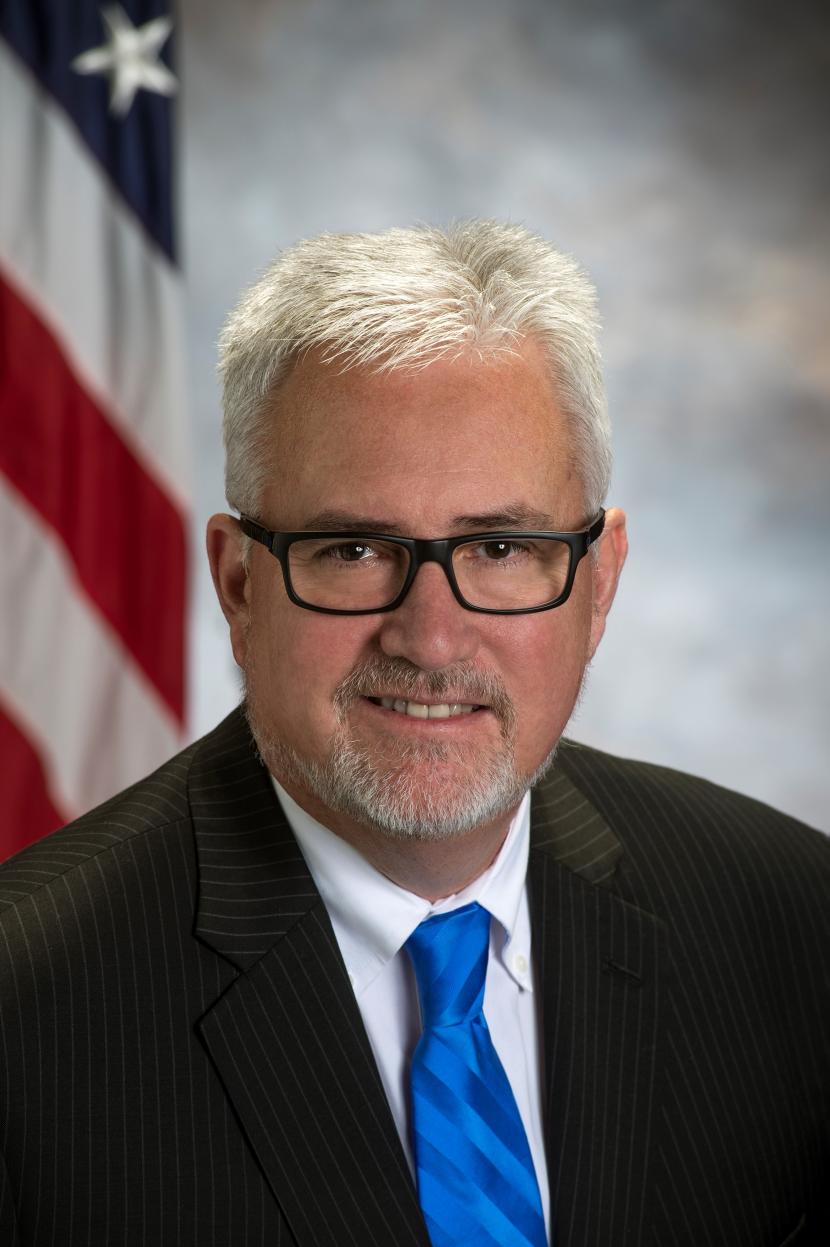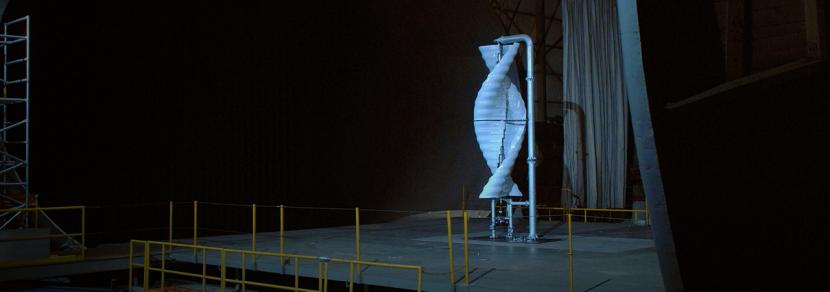Michael Nilsen and Sachin Shetty
By Sherry DiBari
With funding from an Old Dominion University Program for Undergraduate Research and Scholarship (PURS) grant, professor Sachin Shetty and student researcher Michael Nilsen have designed a drone-detection device. In October, Nilsen tested the equipment at two military testing ranges where he successfully detected and identified a drone from 1 kilometer away.
In 2016, Nilsen, then a freshman majoring in electrical and computer engineering, was in Shetty's cybersecurity class. "I thought it was the coolest thing ever," he said.
After the class, Nilsen contacted Shetty and volunteered to help with research. Shetty, whose research specialty is in cybersecurity, holds dual appointments as an associate director at the Virginia Modeling, Analysis and Simulation Center (VMASC) and associate professor in the Department of Computational Modeling and Simulation Engineering.
"Michael expressed interest in exploring that area of research and was very determined to learn and work without pay just to expand his knowledge," Shetty said. "I was impressed by his inquisitiveness, his resourcefulness and his curiosity. You can teach the technical skills, but you can't teach someone to be curious."
In 2017, Shetty received a PURS grant focused on creating a backpack-sized device that could disrupt communications between wireless devices and IEDs (improvised explosive devices).
The grant, sponsored jointly by the ODU Office of Research and the Perry Honors College, supports one-year pilot projects that provide research and scholarship experiences for undergraduate students under the mentorship of faculty.
"The PURS program has been very successful; we had a record number of applications this year and I think I know why," says David Metzger, dean of the Perry Honors College. "PURS enables faculty members who are remarkably student-centered to help students see where an ODU education can take them."
Morris Foster, vice president for research, echoes this sentiment saying, "The Office of Research is delighted to support the PURS program. Undergraduate student participation is a hallmark of ODU research, and something often lacking at larger doctoral universities."
With funding from the grant, Nilsen was hired as a student researcher under Shetty's guidance.
In 2018, they received funding for a second year for research focused on identifying drones in the field based on individual product radio frequencies.
"The Navy had been inundated with drones from rogue states that had been taking pictures and video of installations all over the world," Shetty said. "We looked at ways to combat this problem of detecting enemy drones."
New commercial drones are introduced to the market every week, creating an additional challenge for the military. Shetty and Nilsen's goal was to build a device that could, using machine learning, continuously scan and build a library of radio frequencies.
"Our project is detecting, not taking them out of the sky," Shetty said.
The project not only identifies the presence of a drone, but also its manufacturer.
The equipment's main computational device uses software-defined radio (SDR) attached to an antenna and to a computer. This "emulates in software what old hardware antennas would do," Nilsen said. "It's about the size of a laptop."
Nilsen and Shetty built two versions; the larger one is the size of a cellphone, the second is about half that size. The device works with an open-source software called GNU Radio.
In addition to his positions at ODU, Shetty is an engineer at the Naval Surface Warfare Center (NSWC) in Crane, Indiana. Because of this connection, Nilsen, who has a security clearance, was invited to test the equipment at two military ranges.
Nilsen spent three days in Indiana at NSWC-Crane Division to collect data and test the machine learning models. The goal was to compare performances from field to lab. A week later, he was invited to Arizona for two days of testing at Yuma Proving Ground.
At Yuma, "about a kilometer out, I could tell that there was a drone present," Nilsen said.
"That's huge," Shetty said. "When that happened, that's when they realized that's not just an academic work between a faculty and a student. This has gone to something beyond ... something that they could use."
After the testing, Nilsen presented his work to the NSWC at a technical exchange meeting. "There were many seasoned professionals from places like the Johns Hopkins Applied Physics Lab, Northrup Grumman and Booz Allen ... folks who had been in the radio frequency field for decades," Shetty said. "He (Nilsen) was the only undergraduate student presenting."
The research is not necessarily limited to military use. The Federal Aviation Agency (FAA), for example, would benefit from this technology.
"Although we developed this technology for the Navy, from an academic perspective we always saw this technology as a detection and identification capability that could not only be used for offensive purposes, but also defensive purposes," Shetty said. "We can provide those real-time alerts and detect the presence of a drone within a matter of seconds. A geofence could be created to warn airport security that a drone is in the area."
According to Shetty, this could also apply to oil refineries, nuclear power plants and other sensitive locations. Homeland Security or FEMA might also use the technology in search-and-rescue operations during national disasters to prevent drones from "impeding their work."
Nilsen, who graduates in May with degrees in both electrical and computer engineering, has already accepted a job at Johns Hopkins Applied Physics Lab in Laurel, Maryland, where he will be working with groups who do research in the SDR field.
Shetty and Nilsen credit the availability of the PURS grant for their success.
"I am a big believer in undergraduate research experience early on," Shetty said. "Most of the time the curriculum, for better or worse, emphasizes theoretical knowledge, but coupling that with realistic, sustained, hands-on experience that goes beyond the 15-week semester is critical. It's about learning by doing."
Daniel Campbell contributed to this story.
Related News Stories
$1.5 Million Grant Will Help Launch Commonwealth Center of Innovation for Autonomous Systems
A research collaboration between Virginia Tech and Old Dominion University will pave the way for new autonomous systems projects. (More)
NASA Langley Director Appointed Executive Director of the Virginia Institute for Spaceflight and Autonomy
David Bowles, who spent more than 35 years at NASA Langley, will start his job leading this new initiative on Oct. 10. (More)
Old Dominion University Becomes Full Member of National Institute of Aerospace
As an affiliate member since 2002, ODU has established a record of significant contributions to NIA through aerospace research and helping to manage the institute’s graduate programs. (More)







